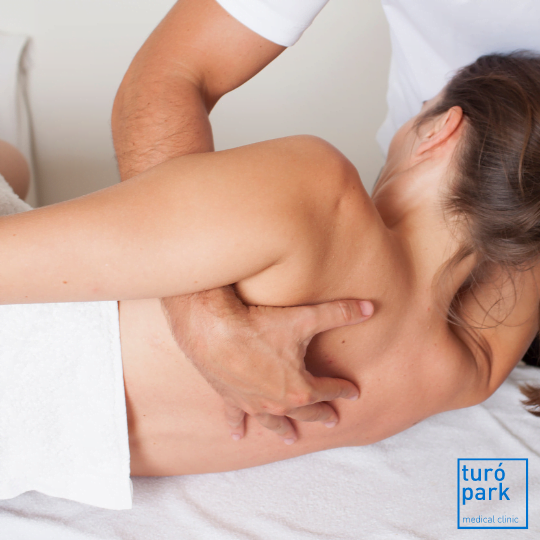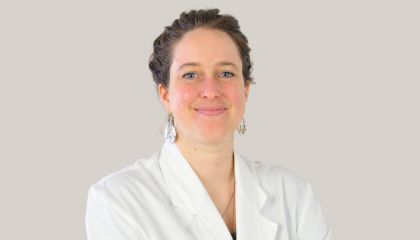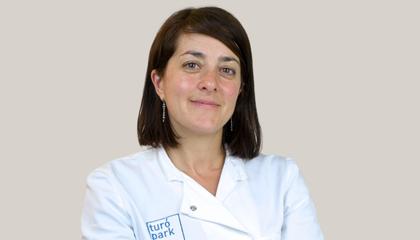Are you looking for an English-speaking osteopath in Barcelona?
Osteopathy is a manual therapeutic method used for the treatment and prevention of many functional disorders. Focusing on the relationship between the structure and functions of the body, it aims to restore the functionality of the structures and systems of the human body in order to optimize its capacity for self-regulation.
Beyond musculoskeletal pain, osteopathy work very well on disorders of the cardiovascular, digestive, genito-urinary, neurological, otolaryngological and pulmonary systems and can relieve both acute and chronic pain.
Do not hesitate to make an appointment with our English-speaking osteopath for a complete and totally personalized treatment.
Fast track your treatment
To book an appointment or speak with one of our friendly team, please get in touch using the options below.

What are the principles of osteopathy?
Osteopathy is based on a notion of globality highlighting the relationship between the structure (bone, joint, cartilage, connective tissue), the function supplied by the neurological system and the vascular compartment supported by the hormonal regulator.
This therapy is based on 4 founding principles:
- The individual is composed of several biological elements, influenced by his state of mind, his environment and his activities. The structures of his body are linked and influence each other. These elements are inseparable.
- Structure governs function. A living organism cannot function normally if its supporting structures have lost some of their mobility.
- The circulation of fluids and nerve impulses in the body is necessary for it to balance the relationships between its structures and to coordinate its functions with the rest of the body.
- The body has the ability to self-regulate.
What are the applications of osteopathy?
- back pain,
- neck pain,
- torticollis,
- scoliosis,
- kyphosis,
- tendonitis,
- other musculoskeletal disorders…
- herniated discs without signs of surgical urgency,
- sciatica,
- neuralgia,
- carpal tunnel syndromes…
- constipation,
- diarrhea,
- bloating,
- gastroesophageal reflux disease,
- hepato-biliary disorders…
- painful periods,
- menstrual cycle disorders,
- pain during intercourse,
- chronic cystitis…
Relieve your pain gently.
Our team of osteopaths will treat all your pains with a manual approach that focuses on the whole body.

Who can benefit from osteopathic treatment?
Osteopathy is aimed at all stages of life, from newborn babies to older adults, and for all lifestyles, sedentary, active or sporty.
For newborns, osteopathy acts essentially on the constraints that the baby underwent during pregnancy and childbirth. It helps the child to swallow or breathe better, relieves stomach aches and other digestive problems, crying spells, plagiocephaly or sleep disorders.
In children, osteopathy can help prevent certain postural disorders, but also behavioral or concentration disorders such as hyperactivity, sleep disorders, digestive disorders, respiratory disorders or ENT.
For teenagers, osteopathy facilitates the adaptation of the body from child to adult. At this age, treatments are mainly for hormonal, gynecological or growth disorders.
In adults, osteopathy is considered more as a preventive measure (check-ups are recommended 2 to 3 times a year), or to treat muscular or articular pain in the body (sprains, tendonitis, back pain, torticollis, neck pain, back pain, post-traumatic pain...). It can also help treat gynecological problems, alleviate stress or relieve sleep disorders.
For pregnant women, osteopathy can relieve the discomforts created by the changes in the body of the mother-to-be: heavy legs, sciatica, pelvic pain, low back pain...
For the elderly, the goal of osteopathy is above all to preserve a maximum of autonomy by preventing the onset of pain related to aging.
What happens during a session with an osteopath at Turó Park Medical Clinic?
During your first consultation, the osteopath will first ask you detailed questions about your health and the problem that brings you to the clinic. He or she will ask you about your physical activity habits, your work, your diet, and your medical history (especially about surgeries).
The osteopath will then perform a clinical examination. You will probably have to put on your underwear to facilitate the examination.
Once the diagnosis is established, the osteopath will perform certain manipulations to mobilize the tissues and improve overall mobility.
On average, a treatment may require several sessions (2 to 3) spaced 1 to 3 weeks apart.
Our English-speaking osteopath

